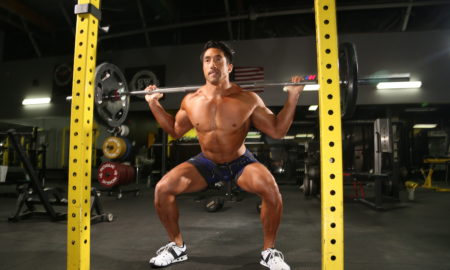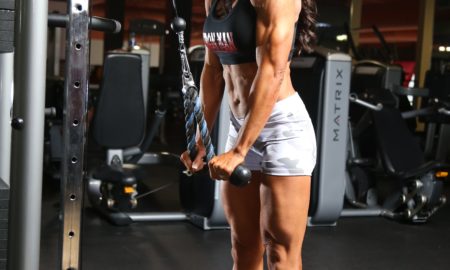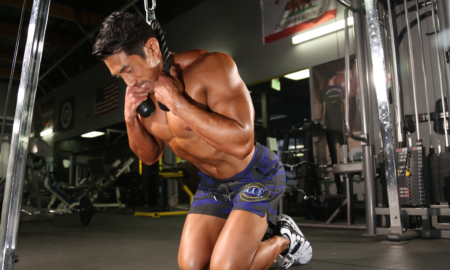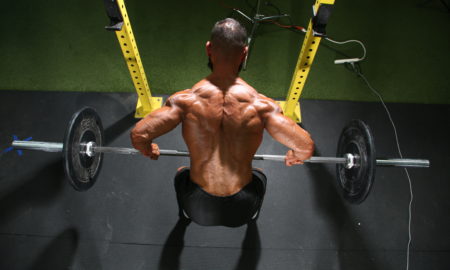I’ve previously addressed pain along the inner side of the elbow from pushdowns and other triceps exercises. This month I want to focus on pain along the outer side of the elbow, commonly known as “tennis elbow.” You can have tennis elbow without ever having played tennis.
It can certainly be caused by the deceleration, or slowing, of a tennis serve or forehand. Changes in your game can trigger the problem as well, such as a new serve or a change in types of strings, string tension or grip size. Repetitive stress, such as typing too much, can create tennis elbow. The gym can be a source of tennis elbow too. Anything involving grip can cause or aggravate tennis elbow. Common exercises that can cause the problem include dumbbell shrugs and heavy curls. Once the area becomes severely inflamed, it is irritated by pulldowns, laterals, reverse curls and nearly anything requiring a firm grip on a dumbbell or barbell handle.
While tennis elbow is a fairly simple problem, it tends to last for months, which is very frustrating for trainees. The source can be inflamed tendons of the wrist extensor muscles, or it can be a partial tear of the tendons, or it can be degenerative changes of the tendon. The location of pain is at or near the bone at the outer edge of the elbow—the lateral epicondyle. An old term for the pain at this point was “lateral epicondylitis,” but that has been replaced by a term indicating wear-and-tear changes in the tendon: extensor tendinosus.
Managing the problem can be tedious. The first thing you have to do is reduce the inflammation and/or pain. To reduce the pain, you must stop exercises that cause it, at least for some weeks. Placing an ice pack over the elbow after training may help. My advice is to use the ice for only 10 minutes. The tissue you’re trying to reach is only millimeters under the skin. If it were a thick, muscular area like the hamstrings, shoulder or low back, I’d recommend 20 minutes. Patients often report more elbow aching when they use the ice pack for 20 minutes on the elbow.
Once the pain lessens, you need to include an old standby exercise in your workout: reverse wrist curls. They strengthen the wrist extensors, the same muscles involved in tennis elbow. These are small muscles, and as you are just coming off an injury, you may not be able to tolerate significant weight. Use a very light weight, and perform several sets of eight to 10 reps to start. You may have a mild ache in the elbow when you start. If that’s all the pain you experience, continue with the reverse wrist curls after each workout. Don’t perform them at the beginning of your workout. It’s not a good idea to fatigue this muscle before you place any additional training load on the elbow. If you perform reverse wrist curls and you feel sharper pain—or the amount of pain doesn’t let you complete a set—stop and continue to ice the elbow for another week until it feels a bit better.
You may find it useful to keep the reverse wrist curl in your workout as a preventive measure. Tennis elbow has a tendency to return, so protect yourself. It’s a very common problem—don’t think you’re the only one in the gym who’s having it. It will improve, but it will take time.
Train smart, then train hard.
Editor’s note: Visit www.SoftTissueCenter.com for reprints of Horrigan’s past Sportsmedicine columns that have appeared in IRON MAN. You can order the books Strength, Conditioning and Injury Prevention for Hockey by Joseph Horrigan, D.C., and E.J. “Doc” Kreis, D.A., and The 7-Minute Rotator Cuff Solution by Horrigan and Jerry Robinson from Home Gym Warehouse, (800) 447-0008, or at www.Home-Gym.com.




















You must be logged in to post a comment Login